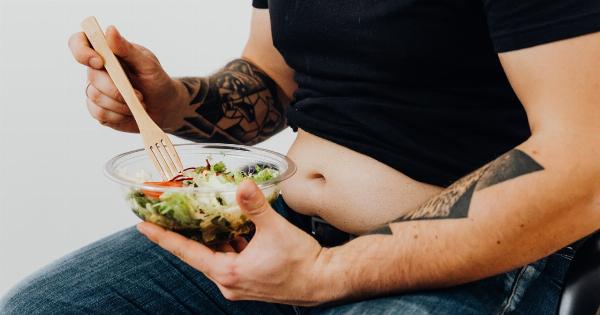Knowing your daily caloric needs is essential if you want to maintain a healthy weight or achieve your desired body weight.
The number of calories you need to consume each day depends on several factors, including your age, sex, weight, height, and level of physical activity. Fortunately, you can use a simple formula to calculate your estimated daily caloric needs without needing to hire a nutritionist or invest in expensive technology. Here are the steps to determine your daily caloric needs.
Step 1: Calculate Your Basal Metabolic Rate (BMR)
Your basal metabolic rate (BMR) is the number of calories your body burns at rest. This is the amount of energy needed to support your body’s vital functions, such as breathing, circulating blood, and maintaining body temperature.
To calculate your BMR, you can use the Harris-Benedict equation, which takes into account your age, sex, weight, and height.
The Harris-Benedict equation is:.
For men: BMR = 88.362 + (13.397 x weight in kg) + (4.799 x height in cm) – (5.677 x age in years).
For women: BMR = 447.593 + (9.247 x weight in kg) + (3.098 x height in cm) – (4.330 x age in years).
For example, if you’re a 35-year-old woman who weighs 68 kg and is 170 cm tall, your BMR is:.
BMR = 447.593 + (9.247 x 68) + (3.098 x 170) – (4.330 x 35).
BMR = 1,396.9 calories per day.
Step 2: Determine Your Total Daily Energy Expenditure (TDEE)
Your total daily energy expenditure (TDEE) is the number of calories you burn in a day, including your BMR, the energy required for physical activity, and the energy used to digest food.
To determine your TDEE, you need to multiply your BMR by an activity factor that reflects your level of physical activity.
The activity factors are:.
- Sedentary: BMR x 1.2 (little or no exercise)
- Lightly active: BMR x 1.375 (light exercise or sports 1-3 days a week)
- Moderately active: BMR x 1.55 (moderate exercise or sports 3-5 days a week)
- Very active: BMR x 1.725 (hard exercise or sports 6-7 days a week)
- Extra active: BMR x 1.9 (very hard exercise or sports, physical job, or training twice a day)
Using the previous example of the 35-year-old woman, let’s assume that she engages in moderate exercise three days a week:.
TDEE = BMR x activity factor.
TDEE = 1,396.9 x 1.55.
TDEE = 2,165.2 calories per day.
Step 3: Adjust Your Caloric Intake Based on Your Goals
Once you know your TDEE, you can adjust your daily caloric intake based on your goals. If you want to maintain your current weight, you should consume the same number of calories as your TDEE.
If you want to lose weight, you need to create a calorie deficit by consuming fewer calories than your TDEE. On the other hand, if you want to gain weight, you need to consume more calories than your TDEE.
It’s generally recommended to create a calorie deficit of 500-1,000 calories per day to lose 1-2 pounds per week. However, this may vary depending on your individual needs and preferences.
Keep in mind that a safe and sustainable rate of weight loss is usually 0.5-2 pounds per week.
Conclusion
Calculating your daily caloric needs may seem daunting at first, but it’s actually quite simple once you know the formula. By determining your BMR and TDEE, you can get a good estimate of how many calories your body requires each day.
From there, you can adjust your caloric intake to achieve your weight goals. Remember to always consult with a healthcare professional before making significant changes to your diet or exercise routine.































